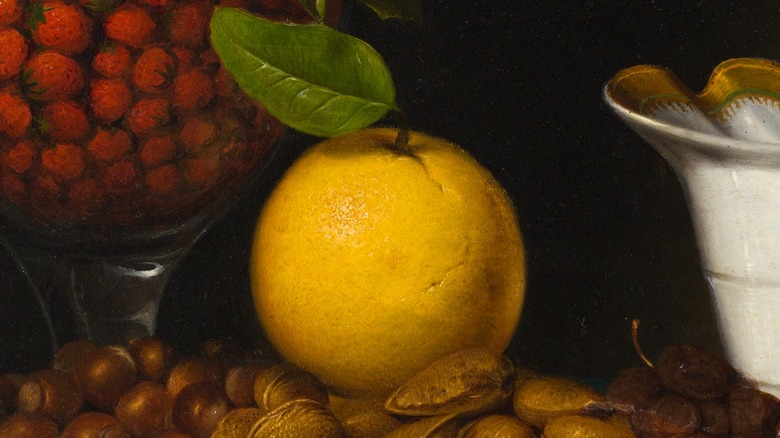Which Orange Came First: The Color Or The Fruit?
English is a strange language. As English Club explains, our language is the result of centuries of conquest and warfare, beginning with the ancient Celtic language spoken by the occupants of the British Isles. Then, our language evolved over the years due to subsequent invasions from various Germanic peoples including the Angles, Saxons, and Jutes. English has also taken influence from French (which itself is based largely on Latin) and even indirectly by Greek (via British Council).
One rather unusual aspect of English is that we use the same word to describe a certain fruit as well as the color of that fruit. We don't call bananas "yellows," nor do we call grapes "purples." But, in English, the fruit of the Citrus sinensis tree is both the name of the fruit and its color. So is orange orange because of oranges, or are oranges orange because of orange? In other words, did the name for the fruit come first, or did the color?
The fruit came first
The first known use of "orange" to describe the fruit was recorded in the 1300s, according to Atlas Obscura. Prior to the 1500s, though, English didn't have a word for the color "orange." The two most important reasons for this are that oranges (the fruit) weren't widely available in English-speaking places until that time, and also there were very few things in an English-speaker's life colored orange. In those cases when an English speaker needed to describe the color, they would just use "yellow-red."
That changed when the fruit, which was first cultivated in China, started becoming more widely available across the English-speaking world, as the Houston Chronicle notes. The word we now pronounce as "orange" was, at first, exclusively used to describe the fruit. Indeed, the word's etymology can be traced to, among other languages, the Arabic "nāranj." The first use of the word "orange" to describe something of the same color was in 1512 (per Vocabulary.com).

